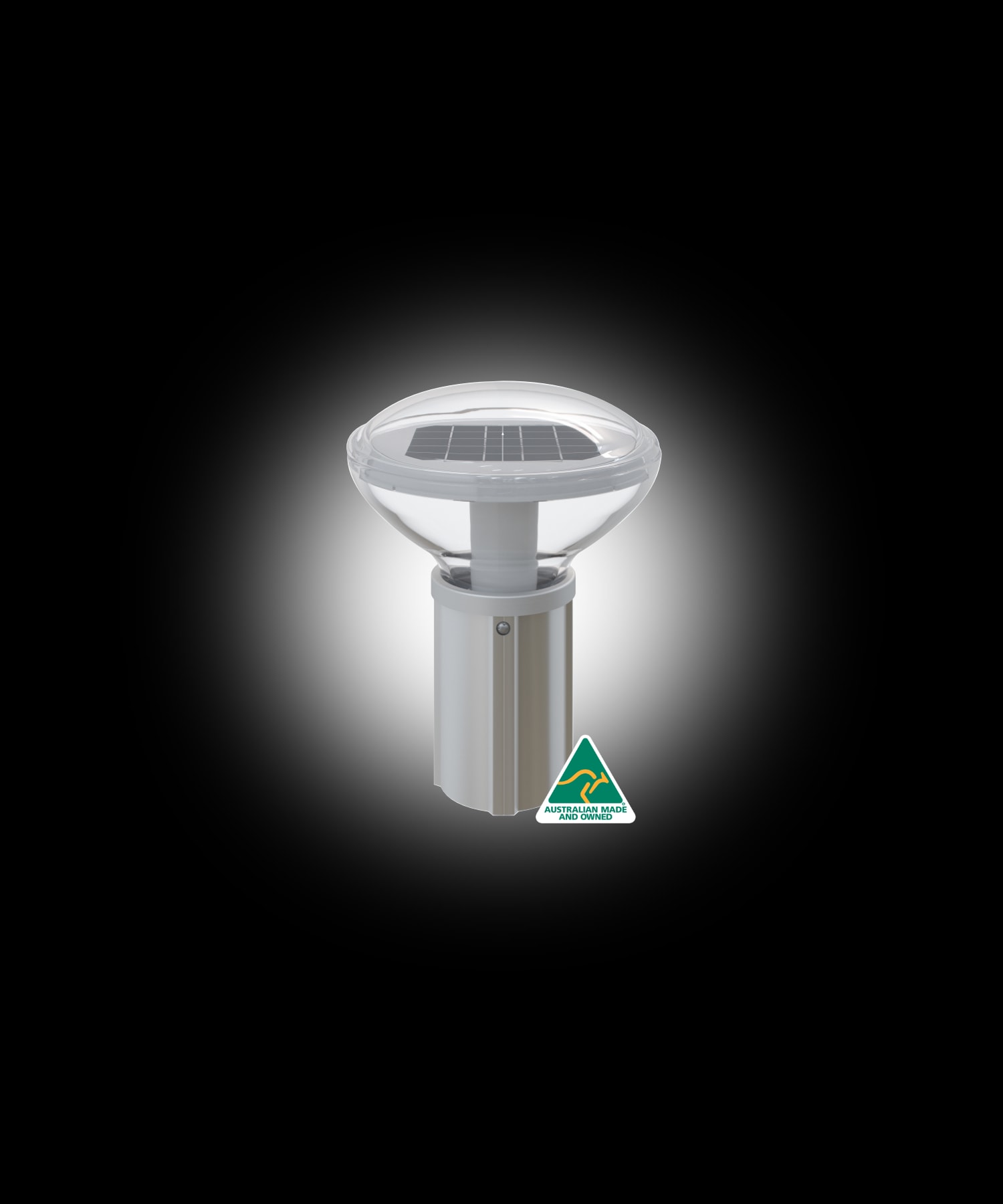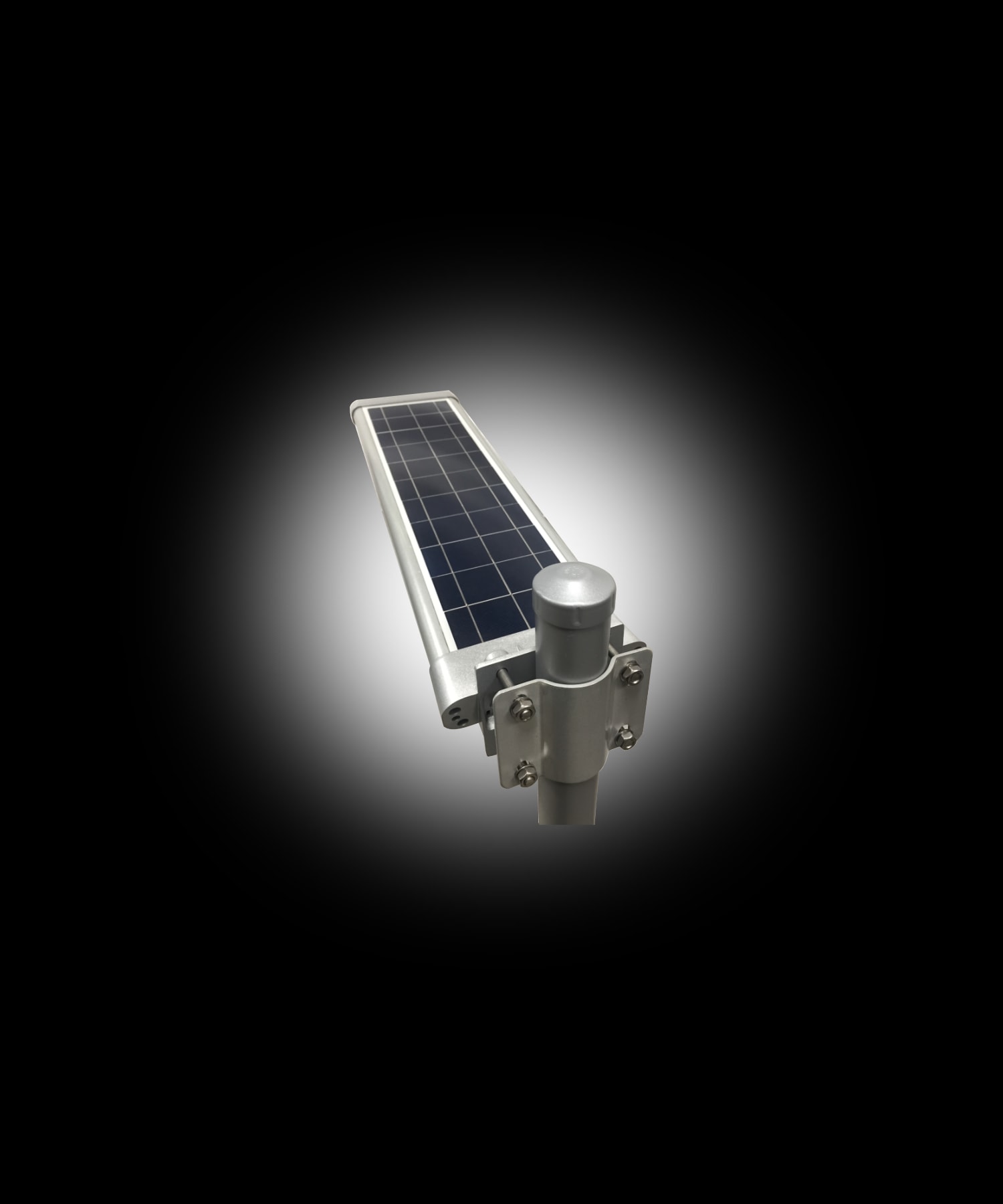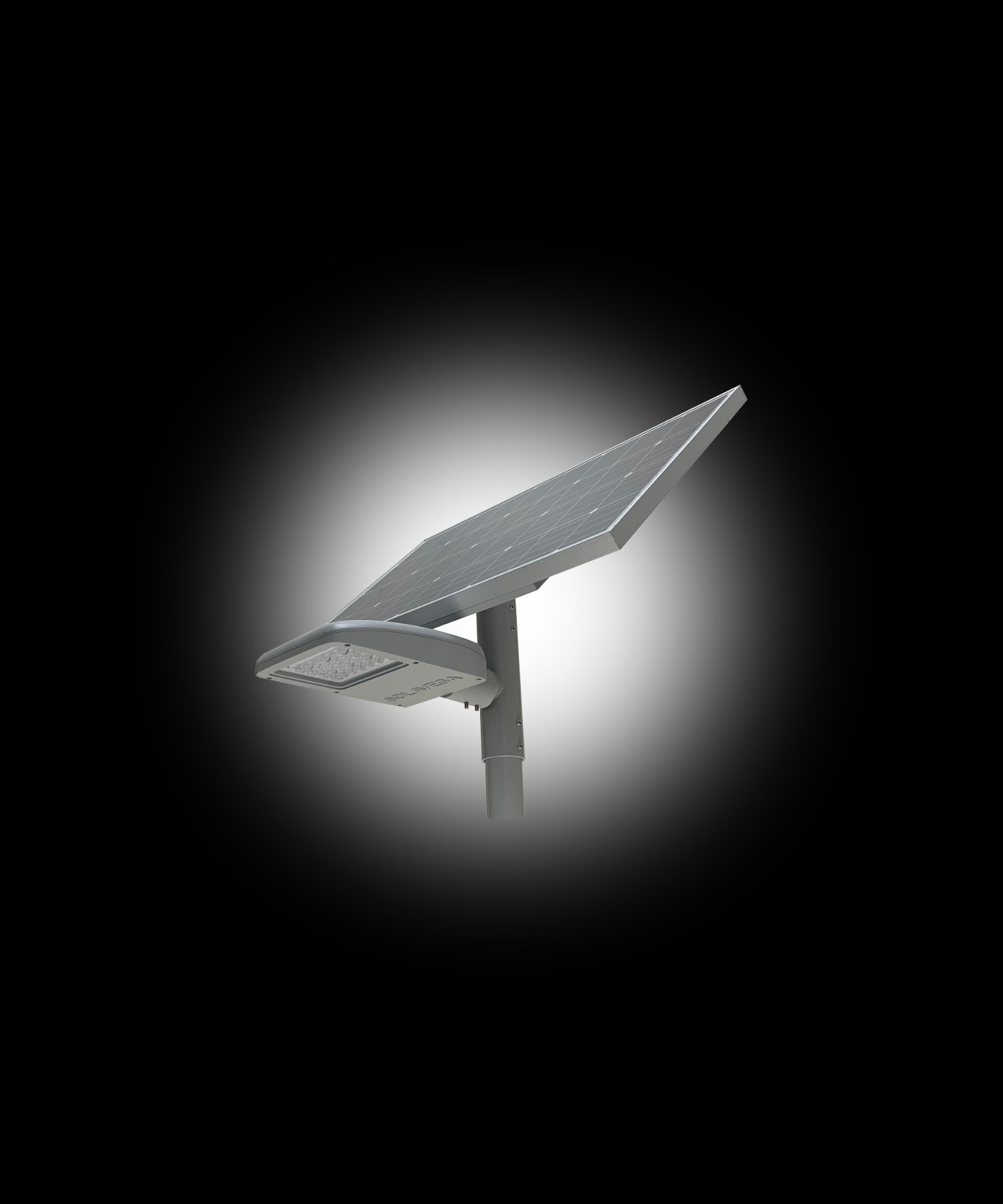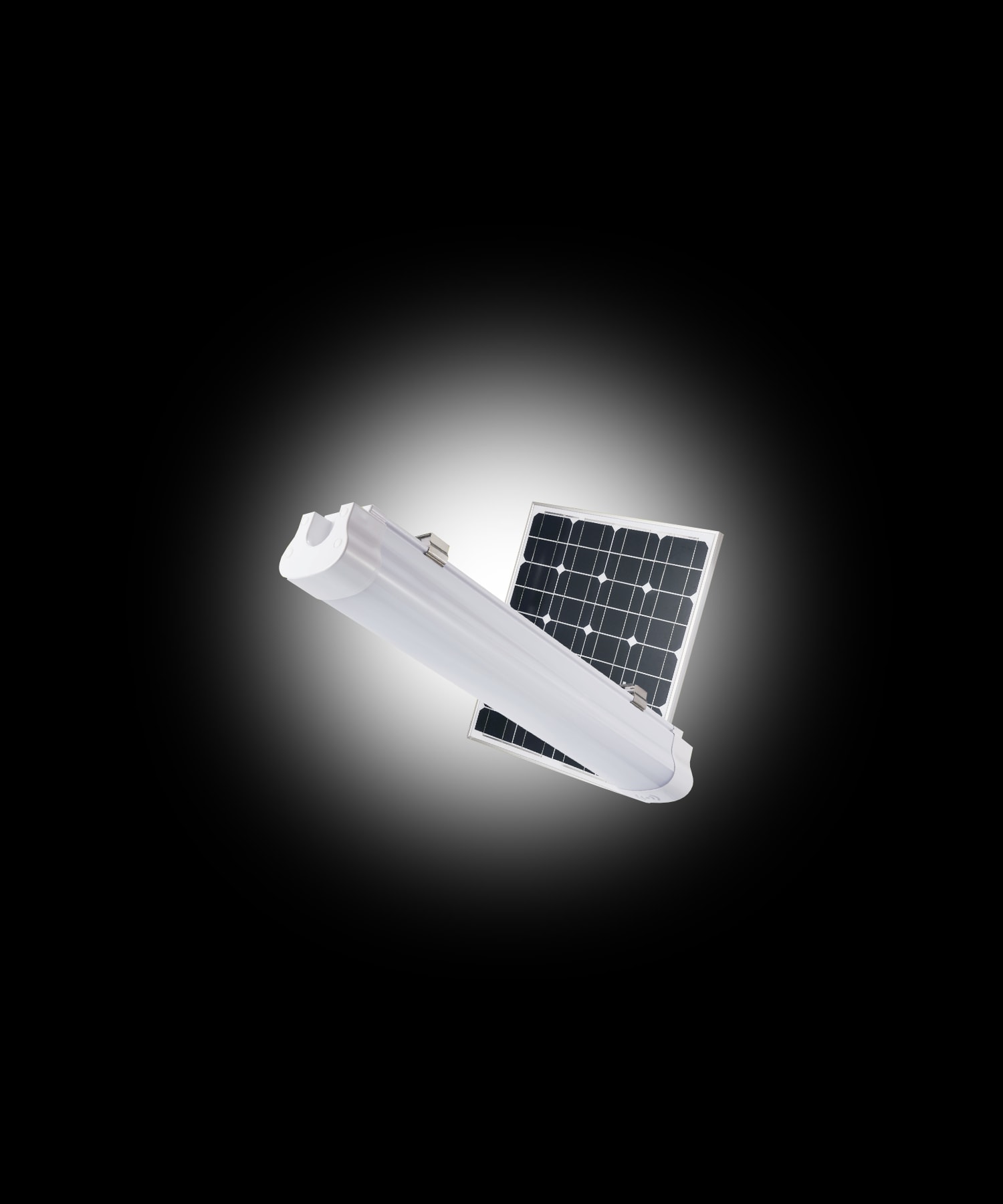Spotlight on Victorian Farmers: Brim Silo
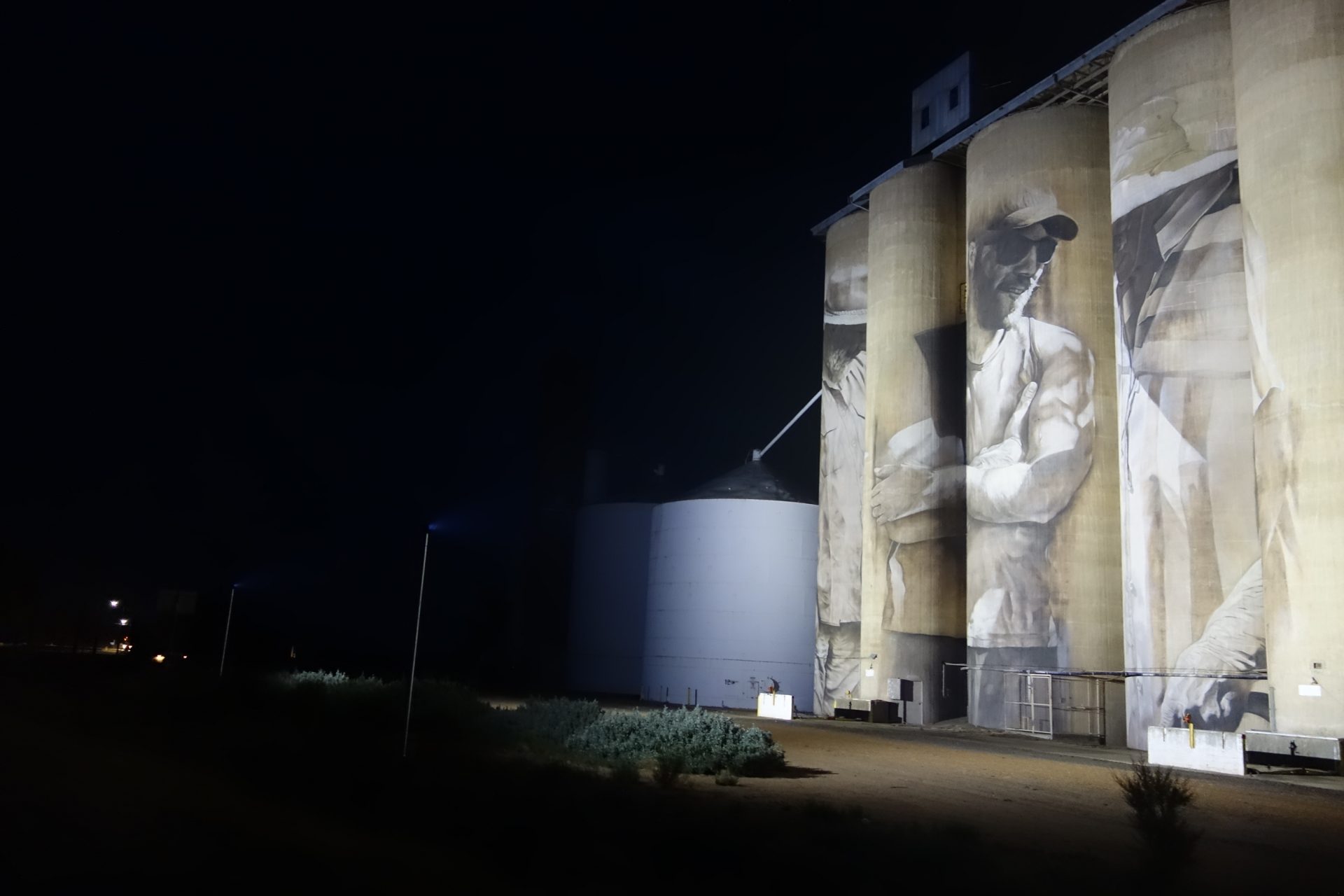
Henty Highway, Brim, Victoria 3391 2017
Background
The Silo Art Trail is a celebrated tourist destination, bringing camaraderie and connectedness through shared public art to the Wimmera Mallee region of Victoria. The artist, Guido van Helton is an Australian-born practicing artist in Melbourne. van Helton’s piece, Farmer Quartet was completed in 2016, and received a nomination for the Sir John Sulman Prize (Art Gallery of NSW).
In 2017, HIGHLUX was invited to partner with local business in Horsham, Laser Electrical, to provide a solar lighting solution to the first of the silo artworks along the now infamous Silo Art Trail.
Project Brief
Lighting for 6 to 8 hours minimum of the Brim Silo mural of dimensions 35m high x 45m wide.
Spoiler
HIGHLUX designed, supplied and installed, a custom-made solution “SOLATITAN” 2x 275w solar panel with battery capacity to power 2 x high-powered LED flood lights for a minimum 8 hours per night through winter, 2x 4m poles for the LED flood lights, 1x 6m poles for the solar engines, battery box, and low-voltage cabling.
Funding
Funded by Yarriambiack Shire Council
Key Challenges
- Size and dimensions of area to light
- Lighting and placement of lights to enhance the Artwork
- Safety and security of lights in remote area
HIGHLUX Recommended Lighting Solution
HIGHLUX proposed a custom-designed solar lighting solution of a split solar system where the solar panel is installed separate from the lights, and, out of view of the artwork. SOLATITAN refers to a custom configuration by HIGHLUX to meet the lighting specifications of the job. In this case, the power required for the floodlight, the size of the silo’s, safety on site as a public shared space, finite budget, as well as consideration to the surrounding landscape’s natural uses, were challenges outside an “off-the-shelf” solution.
Timing & Budget
The project required investigation and procurement of customised solar engine, LED lights & poles, with all the bells and whistles of site visits, lighting design, testing, & troubleshooting. From initial order (October 2017) to project completion (January 2018) was four months (16 weeks).
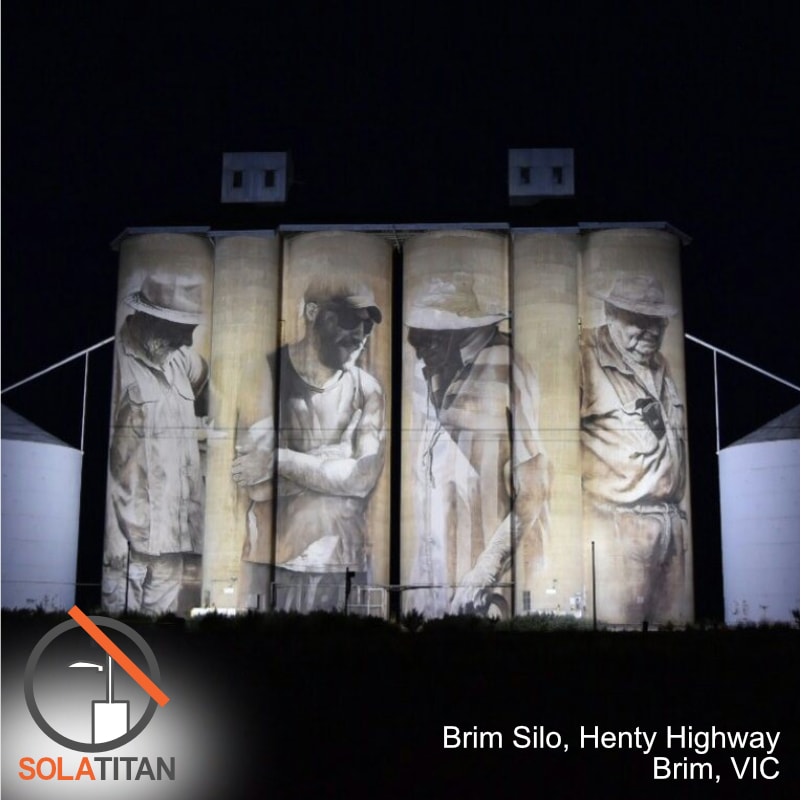
In the photo above, you can see the silhouette of the two LED flood lights, each atop a 4m pole, one at each end of the group of four siloes. Each light is powered by a remote solar system [engine] of a 275w solar panel with 200Ah 24V batteries. Power from the solar engine to each LED light is connected by extra low-voltage cabling run underground in shallow trenching.
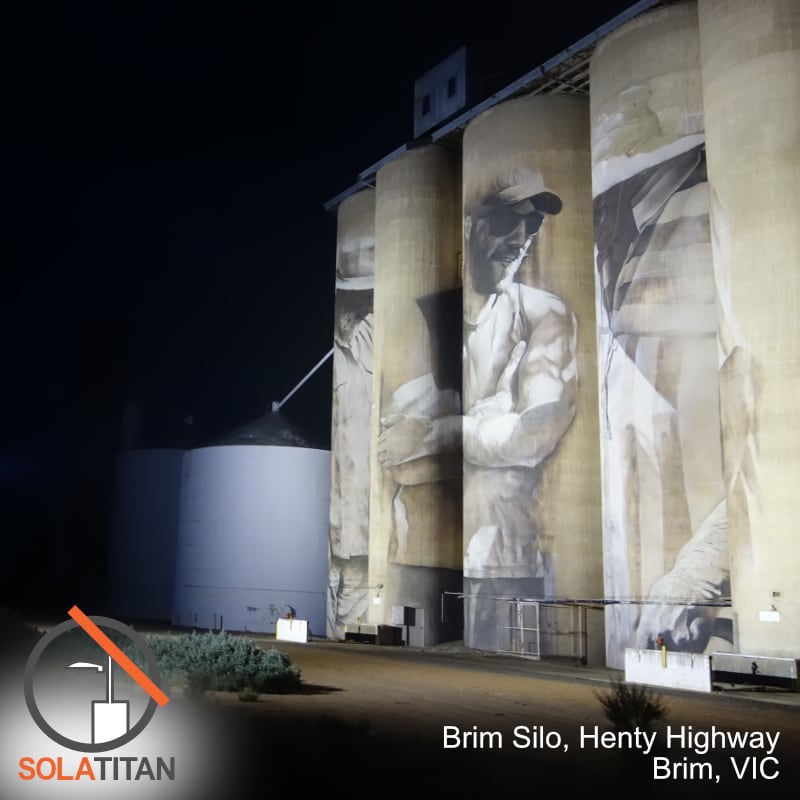
At the side view, the panel and battery unit remain out of sight. Light is directed forward only, so the poles are not lit-up to distract from the artwork. From a distance, only the artwork will be seen, framed perfectly by the darkness of night.
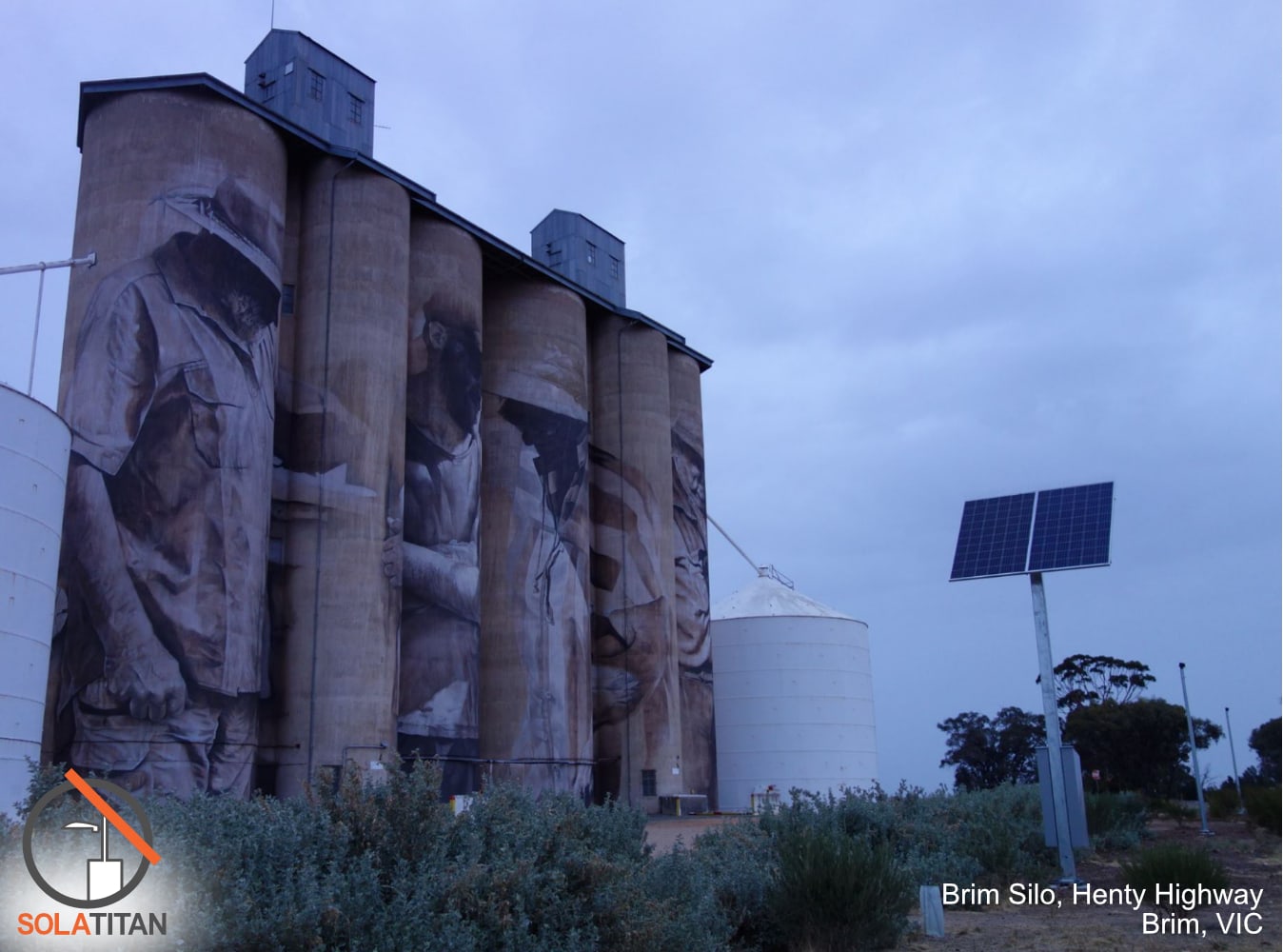
In the photo above you can see the size of the solar panel (2x 275w panel) with the “battery box” attached to the pole. The separation of battery, solar panel, and lights, allowed the artwork to be lit as required, leaving a clear view of the artwork from front and side angles. Separation allowed the housing of the required batteries to sit also away from view. Should maintenance be required for any of the provided parts, the separation of components offers a safe configuration.
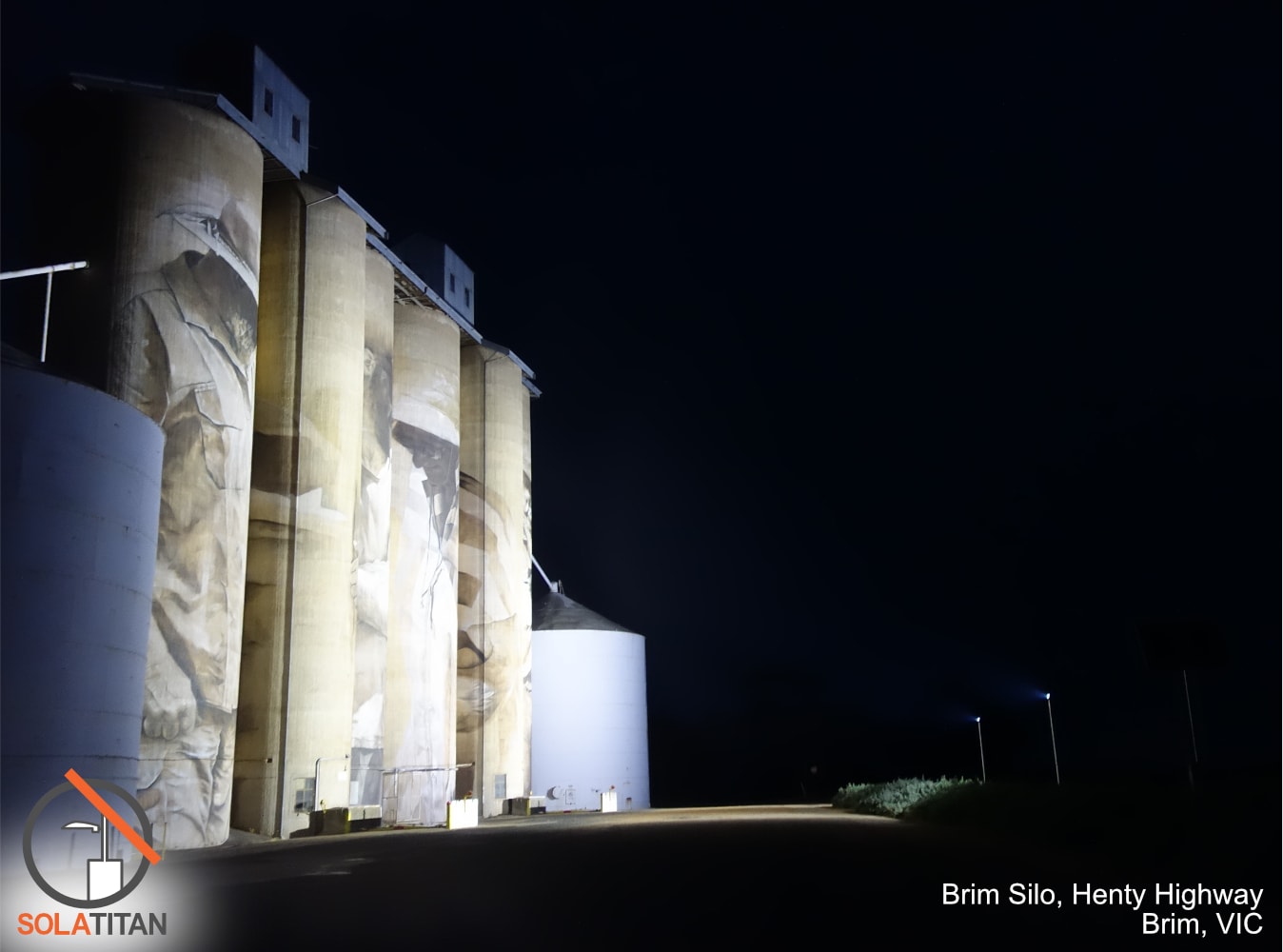
As the night rolls in, the solar engine becomes but a shadow against the intentional framing of the artwork by the well-directed light.
